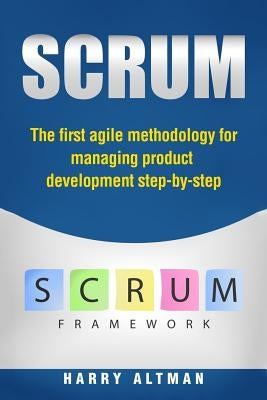Before you leave...
Take 20% off your first order
20% off
Enter the code below at checkout to get 20% off your first order
Discover summer reading lists for all ages & interests!
Find Your Next Read

Scrum is a framework for developing and sustaining complex products. It is a framework within which people can address complex adaptive problems, while productively and creatively delivering products of the highest possible value. Scrum is lightweight; simple to understand and not difficult to master.
Scrum is not a process or a technique for building products; rather, it is a framework within which you can employ various processes and techniques. Scrums makes clear the relative efficacy of your product management and development practices so that you can improve.
The Scrum framework consists of Scrum teams and their associated roles, events, artifacts, and rules. Each component within the framework serves a specific purpose and is essential to Scrum's success and usage. The rules of Scrum bind together the events, roles, and artifacts, governing the relationships and interaction between them.
The heart of Scrum is a Sprint, a time-box of one month or less during which "Done," useable, and potentially releasable product is created. Sprints best have consistent duration throughout a development effort. A new Sprint starts immediately after the conclusion of the previous Sprint. Sprints contain and consist of the Sprint planning, daily Scrums, work development, the Sprint review, and Sprint retrospective.
The rules of Scrum are described throughout the body of this book with the specific tactics for using the Scrum framework:
Thanks for subscribing!
This email has been registered!
Take 20% off your first order
Enter the code below at checkout to get 20% off your first order